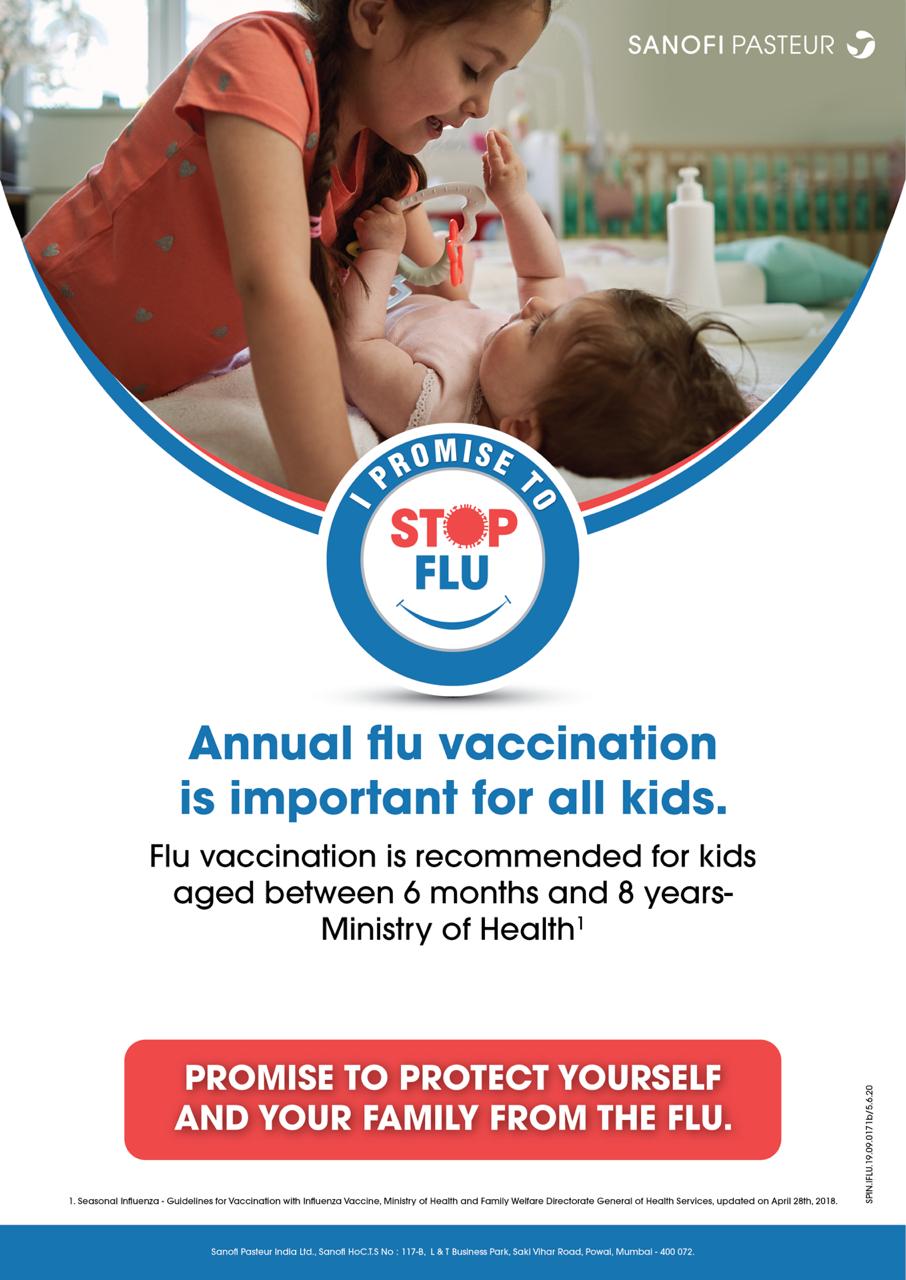Your child has reached 2.5 years of age.
Vaccines recommended at this age are TYPHOID VACCINE AND INFLUENZA VACCINE. These are the same vaccines that were given at 6 months of age to the child.
So why a repeat dose of both the vaccine?
Typhoid is very endemic to India and vaccine efficacy decreases after 2 years of age especially those given before 9 months of age.
With the start of solids and formula milk, child below 1 year were also reported to have typhoid infection so first dose is given at 6 months of age, and to boost that dose a second and the last dose is given at 2.5 years of age.
The flu vaccine is annual and the last dose was given at 1.5 years of age. Thus a repeat dose at 2.5 years of age.
Both are not covered in the Government schedule.
So are they necessary? Let’s go through the problems with both the disease and then decide:
TYPHOID VACCINE


The typhoid vaccine can prevent typhoid fever.
People who are actively ill with typhoid fever and people who are carriers of the bacteria that cause typhoid fever can both spread the bacteria to other people.
When someone eats or drinks contaminated food or drink, the bacteria can multiply and spread into the bloodstream, causing typhoid fever.
Typhoid fever can be a life-threatening disease. Symptoms of infection include persistent high fever, weakness, stomach pain, headache, diarrhea or constipation, cough, and loss of appetite.
People who do not get treatment can continue to have fever for weeks or months. As many as 30% of people who do not get treatment die from complications of typhoid fever. There are fewer antibiotic treatment options as drug-resistant typhoid bacteria have become more common in many parts of the world (especially Pakistan and some cases even India).
Typhoid fever is common in many regions of the world, including parts of East and Southeast Asia, Africa, the Caribbean, and Central and South America. Typhoid fever is endemic in India.
Typhoid vaccines are not 100% effective. The majority of children or adults who are vaccinated don’t get typhoid fever and even if they get it gets better with oral medication. However, it depends on the bacterial load (if too much contaminated water or food is consumed then you can get typhoid even though vaccinated).
Always practice safe eating and drinking habits to help prevent infection.
The injectable vaccine requires a booster after 2 years. If you were vaccinated in the past, ask your doctor if it is time for a booster vaccination. Taking antibiotics will not prevent typhoid fever; they only help treat it.
SCHEDULE: 2 doses, 2 years apart
Child vaccination schedule: 6 months and 2.5 years of age
Hospitalization due to Typhoid fever will require admission for a minimum of 5 days to even 10 to 14 days while vaccination would cost around 2000. Vaccination is cost-effective and a healthy option.
INFLUENZA VACCINE


Seasonal influenza is an acute respiratory infection caused by influenza viruses that circulate in all parts of the world.
The pathogen
There are 4 types of seasonal influenza viruses, types A, B, C, and D. Influenza A and B viruses circulate and cause seasonal epidemics of disease.
- Influenza A viruses are further classified into subtypes according to the combinations of the hemagglutinin (HA) and the neuraminidase (NA), the proteins on the surface of the virus. Currently circulating in humans are subtype A(H1N1) and A(H3N2) influenza viruses. The A(H1N1) is also written as A(H1N1)pdm09 as it caused the pandemic in 2009 and subsequently replaced the seasonal influenza A(H1N1) virus which had circulated prior to 2009. Only influenza-type A viruses are known to have caused pandemics.
- Influenza B viruses are not classified into subtypes, but can be broken down into lineages. Currently circulating influenza type B viruses belong to either B/Yamagata or B/Victoria lineage.
- Influenza C virus is detected less frequently and usually causes mild infections, thus does not present public health importance.
- Influenza D viruses primarily affect cattle and are not known to infect or cause illness in people.
Signs and symptoms
Seasonal influenza is characterized by a sudden onset of fever, cough (usually dry), headache, muscle and joint pain, severe malaise (feeling unwell), sore throat, and a runny nose. The cough can be severe and can last 2 or more weeks. Most people recover from fever and other symptoms within a week without requiring medical attention. But influenza can cause severe illness or death, especially in people at high risk (see below).
Illnesses range from mild to severe and even death.
Hospitalization and death occur mainly among high-risk groups.
Worldwide, these annual epidemics are estimated to result in about 3 to 5 million cases of severe illness, and about 290 000 to 650 000 respiratory deaths.
In industrialized countries, most deaths associated with influenza occur among people aged 65 or older.
Epidemics can result in high levels of worker/school absenteeism and productivity losses.
Clinics and hospitals can be overwhelmed during peak illness periods.
The effects of seasonal influenza epidemics in developing countries are not fully known, but research estimates that 99% of deaths in children under 5 years of age with influenza-related lower respiratory tract infections are found in developing countries.
Epidemiology
All age groups can be affected but there are groups that are more at risk than others.
People at greater risk of severe disease or complications when infected are:
- pregnant women,
- children under 59 months,
- the elderly,
- individuals with chronic medical conditions (such as chronic cardiac, pulmonary, renal, metabolic, neurodevelopmental, liver, or hematologic diseases) and
- individuals with immunosuppressive conditions (such as HIV/AIDS, receiving chemotherapy or steroids, or malignancy).
- Healthcare workers are at high risk of acquiring influenza virus infection due to increased exposure to the patients and the risk of further spread, particularly to vulnerable individuals.
In terms of transmission, seasonal influenza spreads easily, with the rapid transmission in crowded areas including schools and nursing homes. When an infected person coughs or sneezes, droplets containing viruses (infectious droplets) are dispersed into the air and can spread up to one meter, and infect persons in close proximity who breathe these droplets in. The virus can also be spread by hands contaminated with influenza viruses. To prevent transmission, people should cover their mouth and nose with a tissue when coughing, and wash their hands regularly.
In temperate climates, seasonal epidemics occur mainly during winter, while in tropical regions, influenza may occur throughout the year, causing outbreaks more irregularly.
The time from infection to illness, known as the incubation period, is about 2 days but ranges from one to four days.
SCHEDULE: yearly vaccine
Child vaccination schedule: 2 doses in the first year ie 6 months and 7 months of age. Followed by an annual dose. The best month to get vaccinated is May or June (before the start of the academic year)
So, don’t miss either of these vaccines for your child, and know more by consulting your Pediatrician!!
